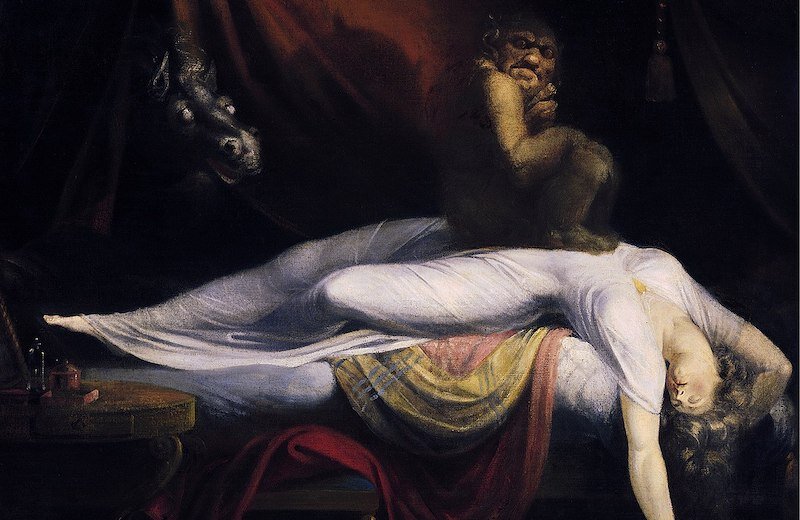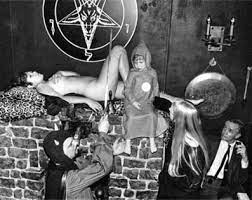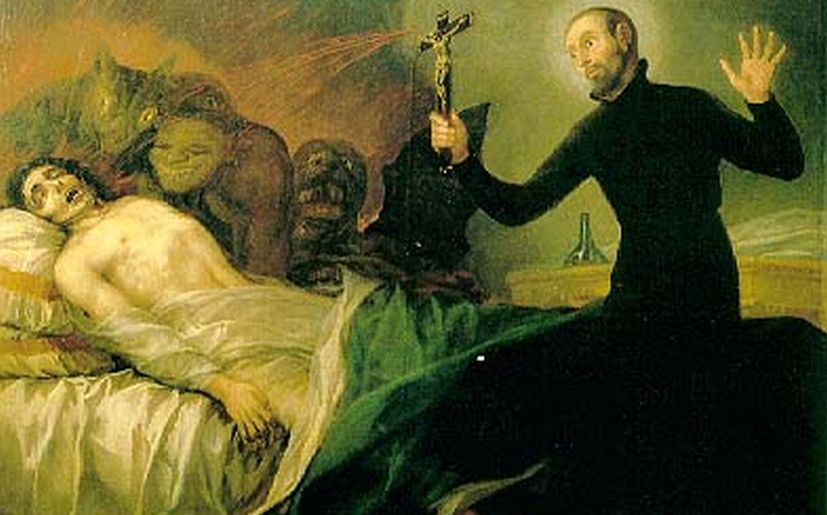Question:
I am asking a question about demonic possession because of what I have learned.
I recently read an article about trauma based mind control. Also, a friend who is studying neuropsychology told me some things that were frightening. I thought that satanism, witchcraft, and demonic possession were all like a fairytale. My friend says that they are not — they are very real. He said he has traveled to parts of the world where satanism and witchcraft are practiced openly and accepted just as Christianity is here in the US.
Part of the trauma based mind control I read about said that programmers convince victims that they are possessed by demons. My friend said that summoning a demon to possess a victim is real and happens. Well, that really made my blood pressure skyrocket. Something I thought was just a ghost story for kids is now becoming a living nightmare. I actually asked my friend, “you mean that possession by a demon, like in ‘THE EXORCIST’ really can happen?” He said, “YES.”
Do you think demon possession really happens? If so, can you explain how this happens?
Frank answers:
Before I get to demon possession, let me explain for general readers that trauma based mind control is popularly known as brainwashing. It’s been around at least since the early twentieth century and probably much earlier. It was used especially by the Nazis to stoke fears of an enemy within the body politic (Jews) and to convince the population that they should depend on the National Socialist Party to save them. It helped to turn the German people against the Jews. We saw this also in ex-president Donald Trump’s lies about the 2020 election and his incitement of his followers on January 6, 2021 to besiege the U.S. Capitol while Congress was certifying the electoral votes. Ordinary patriotic Americans besieged the Capitol building after being exhorted by their President (Trump) to head to the Capitol and later expressed regret before judges, when they were arrested and charged, that they acted in this way. In spite of all evidence to the contrary millions of people still believe that the 2020 presidential election was “stolen.” One could say that this is a form of mass seduction and possession.

Brainwashing has been used on individuals as well as whole populations. It’s been used by U.S. intelligence services and by police around the world in interrogating prisoners using torture to try to elicit information. The forms of abuse vary from depriving the victim of basic needs such as food or sleep, inflicting physical pain, or threatening psychological abuse (like suggesting that bad things will happen to the victim’s loved ones if the victim doesn’t comply with the abuser’s demands).

The torture of prisoners just for the sake of torturing them occurred at the Abu Graib prison in Iraq. It served to humiliate them and make them dependent on their captives for the smallest acts of kindness but served no real intelligence purpose. Abuse for the sake of abuse is evil.

Trauma based mind control may be used by an abusing spouse on his or her abused spouse. The subject of the abuse is not usually aware of the manipulation that is taking place. The abuser, at some point, may present himself or herself as a friend and the victim wants that friendship rather than the abuse and complies with the requests or demands of the abuser. In all these situations, one could resist attempts at mind control by clinging to one’s own mind, exercising one’s own will, and giving vent to one’s own emotions. Unfortunately, this is often done at a steep price for the victim.

The point of mind control is to take away the victim’s own mind, to get the victim to submit to the will of the abuser, and to respond to his or her emotions or needs (like having sex). Control might include convincing the victim that he or she is demon possessed and something must be done to expel the demons (such as giving into the demands of the abuser). In parts of the world where demon possession is common, such as southeast Asia, it provides a narrative to cover acts of spouse abuse. See Zuriatunfadzliah Sahdan, Rachel Pain, Cheryl McEwan, “Demonic possession: Narratives of domestic abuse and trauma in Malaysia,” Transactions of the Institute of British Geographers (05 August 2021), who explore “how the notion of demonic possession is used by survivors and perpetrators as a metaphor for domestic abuse, and a narrative to make sense of and excuse it.”
The demonic is often associated with sex. The earliest account of demon sex in Jewish and Christian traditions comes from the Book of Genesis, which says that prior to the flood fallen angels mated with women to produce a race of giants. Notions of women having sex with Satan and doing the devil’s will led to the demonization of witches in the medieval and early modern West, including in the Salem Witch Trials in colonial Massachusetts in 1692-1693. Margaret Denke, “The Devil’s Insatiable Sex: A Geneology of Evil Incarnate,” Hypatia 18/1, and “Feminist Philosophy and the Problem of Evil” (Winter 2003), pp. 10-43, argue that this scapegoating of witches was a way for men to control women.

Sex continues to be associated with modern Satanist cults. Per Faxneld and Jesper Aagaard Petersen explored the role of sexuality in Satanist cults in three instances: the positive view of sex and sexuality that Satanism shares with neo-paganism; the more cynical and instrumental view of sexuality found in cults such as Anton S. LeVey’s Church of Satan, which has been accused of being little more than a commercial sex club; and the more esoteric use of sexual energies and gender polarities in rituals often tinged with the darker aesthetic of sadomasochism. See Faxneld, P., Petersen, J.A. (2014). “Cult of Carnality: Sexuality, Eroticism, and Gender in Contemporary Satanism.” In: Bogdan, H., Lewis, J.R. (eds) Sexuality and New Religious Movements. Palgrave Studies in New Religions and Alternative Spiritualities. Palgrave Macmillan, New York. https://doi.org/10.1057/9781137386434_8.

Evil is often discussed in the abstract, but it is personified in the Bible. The problem is that the images of Satan in the Bible aren’t consistent. Was the serpent that tempted Eve in Genesis 3 the devil in disguise or just a talking snake? The identification of the serpent with evil is seen in the medieval image of the dragon who takes captive the young maiden (a figure of the church) and who needs to be rescued by the knight (St. George — a Christ figure). But if the snake is the personification of evil, of Satan, what is it doing in Paradise?

In his painting of the temptation of Adam and Eve on the ceiling of the Sistine Chapel Michelangelo portrayed the serpent as female, possibly the she-demon of Mesopotamian and Jewish mythology named Lilith in Isaiah 34:14. He was drawing on a late medieval/early Renaissance convention that identified temptation as female and women with sin. Before that the serpent was simply a snake. The identification of the snake with the devil would have made the snake a male. Chalk this up to Catholic misogyny.

The term “Satan” is not actually a person but a function. In the Book of Job the Satan really functions as God’s prosecutor who travels to and fro on the earth checking to see that faith is what it should be. (“Satan” is a Persian word for prosecutor.) God actually gives Satan permission to test Job. Is the devil who tempted Jesus in the gospels also functioning as a prosecutor to see if Jesus’ commitment to his mission is what it ought to be? Is Satan God’s devil after all?
There’s a theological problem if a source of evil exists separate from God and also if evil exists in God. The ancient religion of Manichaeism, with roots in Persia, divided the world between good and evil principles and regarded matter as intrinsically evil and the spiritual as intrinsically good. The Bible, on the contrary, regards matter (the created world) as intrinsically good and created by a benevolent Creator.
Apocalyptic literature resolved the conundrum by portraying Satan as a fallen archangel who rebelled against God in heaven and was defeated in the heavenly battle by the archangel Michael and thrown down to earth with all his followers (Revelation 12). The sculptures of Michael throwing Satan down to earth above this post are in exterior of the new Coventry Cathedral in England that was built to replace the old cathedral that was bombed during World War II. The Festival of St. Michael and All Angels is celebrated on September 29 in the Western Christian calendar.
In the Christian tradition Satan has been viewed as the enemy of God rather than God’s prosecutor. Italian artist Roberto Ferri painted several pictures of a brooding “fallen angel,” as if plotting his revenge.

John Milton’s Paradise Lost picks up the theme of Satan’s ambition. Satan has the best lines in this epic poem. “For to reign is worth ambition, though in hell. Better to reign in Hell than to serve in Heaven.” Satan and the demons are portrayed as fallen angels who rebelled (led an insurrection) against God.

by Quim Abella
This all takes place in heaven, in eternity, outside of historical time. It is the stuff of mythology, of primordial origins, of what took place in Mircea Eliade’s famous phrase, in illo tempore, “in that time” of beginnings before time.
The first chapter of Genesis can be interpreted, as some Jewish commentators do, as God’s mastery of the pre-created world, the subjection of the sea, which represents chaos. God’s creative work is to bring order out of chaos. But evil persists in creation. (See Jon D. Levenson, Creation and the Persistence of Evil: The Jewish Doctrine of Divine Omnipotence, Harper and Row, 1985.) However, the Book of Revelation envisions a new earth in which “the sea is no more” (Revelation 21:1). This is God’s final mastery over creation, the elimination of chaos.
In the meantime the Satan and his angels have been thrown down to the earth. The devil tempts Jesus at the beginning of his ministry to look after his own needs by turning stone into bread, by proving his trust in God’s word by leaping off the pinnacle of the Temple and relying on God’s angels to bear him up, and by serving Satan who can deliver over to Jesus all the kingdoms of the world (Matthew 4:1-11). We can see our own contemporary temptations in the temptations of Jesus when we look out after our own needs instead of the needs of others, when we seek the acclaim of others in what we do, and when we grasp for power. The gay artist Wes Hempel portrayed the temptation of Jesus in a painting entitled “Temptation” in which the devil offers the whole world to Jesus if he will just bow down and worship Satan.

Wes Hempel portrays the devil as a fallen angel by painting his wings black. In the oil painting below Hempel portrays the devil as in charge of the world and its commodities. They are the devil’s to give if Jesus or we would serve him instead of God.

Jesus devoted much of his ministry to fighting Satan by exorcising demons. Healing and exorcism were seen as ways of advancing the kingdom of God. When the demons exorcized by Jesus left a body they had inhabited, they shrieked their recognition of Jesus as the Son of God. The demons knew who Jesus was before his disciples did! But these spiritual beings needed another body to inhabit, and in Mark 5 Jesus lets the exorcized demons take possession of pigs, which then stampeded off a cliff into the Sea of Galilee and were killed. (Well, Jesus was Jewish, but this was not good for the local economy on the Gentile side of the lake and Jesus was asked to leave the territory!)

The questioner asks how demonic possession happens.
Possession happens because demons are spiritual beings and need bodies in order to be manifested in the world. Possession by evil spirits is a reality in many places in the world where the spirit world is real to people. Shamans in many cultures deal with the spirit world, driving evil spirits out of a person and inviting good spirits in. There are places in the world where no Christian missionary ought to go who doesn’t know how to perform an exorcism. The Catholic Church has trained and certified exorcists. There are undoubtedly exorcists in other Christian traditions too (especially in Pentecostalism) who perform exorcisms in Africa and in other parts of the world where exorcism is regularly practiced. The following image is of an exorcism being performed by Brother Hermes Cifuentes, a Catholic exorcist, in Columbia.

I saw a demon-possessed man on a street in Yogyakarta, Indonesia. How do I know the man was possessed? Because my companion told me rather casually that the man was possessed and I believed her on the basis of what I witnessed. I’ve seen schizophrenics on the streets of American cities, but I’ve never seen anything like the writhing of this man’s body, the growling noises coming from his throat, the empty look in his eyes. I asked an Indonesian friend who teaches in a seminary in Jakarta and has a PhD in philosophy from an American university and is quite rational if demon possession is an issue in Indonesia. He assured me that it is and that some pastors are called on to perform exorcisms.
Today, many people deny the existence of Satan and demons or believe that Satan is only a metaphor for evil. The Bible is clear that the life of faith is a spiritual battle against powers or forces of evil outside ourselves. “For we do not wrestle against flesh and blood, but against the rulers, against the authorities, against the cosmic powers over this present darkness, against the spiritual forces of evil in the heavenly places” (Ephesians 6:12). Yet 1 John 4:4 reminds us that God’s power far exceeds those of any demon: “Little children, you are from God and have overcome them, for he who is in you is greater than he who is in the world.” Yet even now, as 1 Peter 5 says, “Your adversary the devil prowls around like a roaring lion seeking someone to devour.”
Far from being a creature with hooves, horns, and a tail in red asbestos underwear carrying a pitchfork leaving the odor of sulfur, C. S. Lewis, The Screwtape Letters, famously portrayed hell as a bureaucracy and one of the senior devils as Uncle Screwtape who advises his nephew Wormwood, a junior tempter, on how to undermine the Enemy (God). The most insidious form of temptation is to raise doubts about what God said, as the serpent in Paradise did with Eve.

Personifying evil makes it real. Evil is not just an abstraction. Evil is a force outside of ourselves that can take possession of us and cause us to do things we would not do on our own. In other words, evil is not the same as sin, for which we bear sole culpability. There is some truth to the statement, “the devil made me do it.” But we shouldn’t be frivolous about this; it is insidious. Evil people intend to cause harm for the purpose of causing harm, as the psychiatrist M. Scott Peck documented in People of the Lie (New York: Touchstone, A Division of Simon & Schuster, 1983).
So, yes, evil is alive and well in the modern world and can inflict harm, even massive harm — sometimes in the name of the state, but also in the name of religion. Well did Jesus teach us to pray, “Deliver us from evil.” Some versions have “Deliver us from the evil one.” But Satan and the power of evil was broken by the cross and resurrection of Christ. Therefore, when it comes to the devil, Martin Luther, who is reported to have thrown an ink pot at the devil, penned in his most famous hymn, A Mighty Fortress is our God, “one little word shall fell him.” This is the word of exorcism in the Name of Jesus.

Probably the leading scholarly authority on Satan and demon possession is Jeffrey Burton Russell whose books include Satan: The Early Christian Tradition (1988), Lucifer: The Devil in the Middle Ages (1992), Mephistopheles: The Devil in the Modern World (1992), The Prince of Darkness: Radical Evil and the Power of Good in History (1993) – all published by Cornell University Press. Perhaps tired of dealing with the devil Dr. Russell also wrote A History of Heaven: The Singing Silence (Princeton University Press, 1997). See also the work of the psychiatrist M. Scott Peck, Glimpses of the Devil (New York: Free Press, a Division of Simon and Schuster, 2005) who defines evil as the attempt to cause harm simply to cause harm.
Pastor Frank Senn






